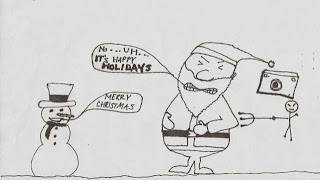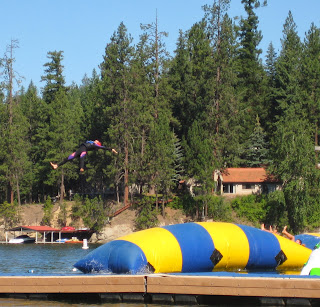Journalism - A Sense of History
1608
Summary: In the vast history of journalism, this year was when the colonies brought forth John Smith who put together a newsletter called the News from Virginia that informed the public.
Significance: This event was the beginning of a new kind of journalism. It was an event that showed the initiative of one person to spread information to everyone else to keep all informed. This concept was fairly new at the time.
1690
Summary: In 1690, America had its first ever newspaper. Published in Boston, it was known as the Publick Occurrences, both Foreign and Domestic.
Significance: This publication was the start of newspapers. Not only 8was it spreading information, but it was giving valuable insight on what was happening near by, as well as across seas.
1729
Summary: Years later, Benjamin Franklin created a new newspaper that was soon seen as the best when compared to all the others. It was largely known considering its outstanding circulation, and also make the best money because of advertising.
Significance: While newspaper had only been created at this time, Franklin’s stands out because of its quality and improvement. More people read it, there were more columns, and all in all, it was the best paper around.
1769
Summary: Isaac Doolittle invents something revolutionary in 1769 known as the printing press. The American creation changes the face of journalism.
Significance: Before printing presses, journalists and writers had to use their hands to create the paper. The printing press allowed for faster and more efficient newspapers to be created.
1776
Summary: This year was one of change and politics. Newspaper matched this mood, and Thomas Paine, a writer who had an interest in politics, created Common Sense. This pamphlet was a work that actually pushed readers to put their beliefs against Great Britain at the time.
Significance: This was a pivotal pamphlet considering the writer’s aim and motive. It outlines the power newspaper could hold over the public, as well as how political they can be.
1776
Summary: During this grand year of change for America, the Declaration of Independence was created and signed. This document represented America’s freedom, and 20 other newspapers published the document in its pages.
Significance: America’s newfound freedom was important, but letting everyone know could have been a challenge had their not been a newspapers to effectively spread the word. This event showed how journalism could benefit society through sharing laws and important events like this one.

1791
Summary: What later became the Bill of Rights, the Constitution’s first amendment gave many freedoms such as freedom of speech, freedom to assembly, etc. More importantly, they gave freedom of the press.
Significance: When this was passed, it gave newspapers the freedom to write about whatever they wanted. This was necessary so the newspaper’s only concern was to inform the public, and now they didn’t need to worry about other parties asking or altering stories, etc.
1795
Summary: In 1795, reporters gained even more freedom and importance. They were then allowed to go into Senate and House of Representatives to fuel their stories.
Significance: This gave journalists the insight necessary to let the public know what was going on in the government, something left shut off from most. Such a trust was vital to the writings of journalist for years to come.
1830s
Summary: This decade allowed for better transportation of the news. Animals such as pigeons and ponies hauled these papers to father locations for better circulation.
Significance: At this time when there were no cars, transporting the news was difficult. However, animals were soon used to better share the information with the public. This concept soon grows as time and technology improve.

1851
Summary: As more and more newspapers were being created, one in particular, looking bad, took significance. The New York Times was created, and this paper has led the way to the best coverage and sharing of news to today.
Significance: It is these timeless newspapers that have paved the way for how news is shared in the world. The New York was credible, well written, and had a great readership at the time. It has only grow from 1851, and is one of the best of all time.
1856
Summary: The 19th century population practiced racism naturally, and African-Americans were not granted the same rights. However, in 1856, African-Americans created the first daily newspaper known as the New Orleans Daily Creole.
Significance: This new publication allowed the African-American society to spread information amongst each other as well as properly educate everyone about things that mattered to their specific audience. It was a minor step in that race’s progress and overall growth and a race in America.
1861-1865
Summary: During this time, the Civil War was taking place in American. One action that set this war a part was how much coverage news-wise was done. Hundreds of photographers were permitted to report, as well as Mathew Brady, famous for his photographs (his to left).
Significance: Earlier we see coverage of laws, then government, and now actual wars being documented visually. Actual reporters were going in and delivering accurate information to the public to allow the public knowledge of the Civil War and what is going on.
1870-1900
Summary: These years brought growth for a gender often left prejudiced against in the workforce in the past: women. Women were now starting to write and edit for newspapers.
Significance: This, just as it was for African-Americans, was a large leap for the growth of women as whole, especially in the workforce. They proved capable of putting out quality work and holding their own weight.
1880-1900
Summary: This may be one the most important changes for newspaper. The entire experience and style of the newspaper is altered when photographs are soon added with the writing.
Significance: Having photos in the paper allowed for readers to experience the news visually for once. Everyone knows a picture is worth a thousand words, and pictures enhanced the stories greatly both then and now.
1890s
Summary: Yellow journalism became populars in the 1890s as different newspaper competed for more readers and profit. This type of journalism sensationalized and gave false news to readers just to gain more readership. In some cases, these lies started actual wars.
Significance: This was a dangerous idea they grew to be popular. While altering and embellishing the truth, the public was given inaccurate information.In the case of the Spanish-American War, many believed it to be fueled purely by newspaper headlines. This also outlines the power behind the paper and how crucial it is in society.
1930s
Summary: This era was significant in how it popularized gossip on the newspaper. This is when we get the first feel of a “tabloid” and see “rumors” published in papers. These types of columns need not be accurate, but more for entertainment purposes.
Significance: This is important to note because is shoes how newspapers are gradually morphing and possibly becoming more relaxed in the writing. Allowing gossip, sometimes not accurate, went along with the previous era of yellow journalism in how the truth didn't take priority, unfortunately.
1950s
Summary: This may be one of the most revolutionary inventions of all time: television. It changed the way people lived their lives, and it changed the way the public saw news. Some, instead of reading the paper, turned on the television to get their news.
Significance: This was a new media unlike the paper, photos, or radio. It was visual, audio, and had movement. It gave a different kind of light to news that allowed the public to view the news as it was happening. This gave news a more real feeling and allowed to come to life.
1960-1990
Summary: Earlier in the journalistic history of the U.S. we saw reporters being permitted into the Senate and such, but at this time we see negative content about the government coming out in the papers. Examples likes the Pentagon Papers, Watergate, Scandal. and more, outline what is wrong with the american government.
Significance: Though bad that the government has things to hide, it is good to know that the newspaper’s first concern is to properly inform the public about what is going on behind the government doors. It exercises out first amendment to the freedom of press, which while the government discourages it, is essential and appreciated in the public.
1970s-1980s
Summary: Possibly more life-altering than the television, was the invention of the computer. Not only was information of news more readily available online, but the actual creation of the papers were more efficient and easier to create considering they were done digitally.
Significance: Programs allowing digital typing, transferring of files, printing soon, and more information available, this invention changed journalism forever. More people were able to view it as well. The step into technology improved the lives of readers and journalists across the U.S.

 1990s
1990s
Summary: This, branching off from changes in the 70s and 80s, allowed information to be stored and shared globally. Computers, becoming more popular, allowed for stories to be saved online, and others from all around the world could read and learn as they do now.
Significance: In the beginning, readership was hard to both gain and judge, but now, we see the entire world able to read and be informed about what is happening around the world. This revolutionary concept improves the circulation of the news better than any other, and has only continued to grow.
Works Cited
"Tracing the Story of Journalism." Tracing the Story of Journalism in the United States. The Write Site, n.d. Web. 09 Sept. 2013.




















